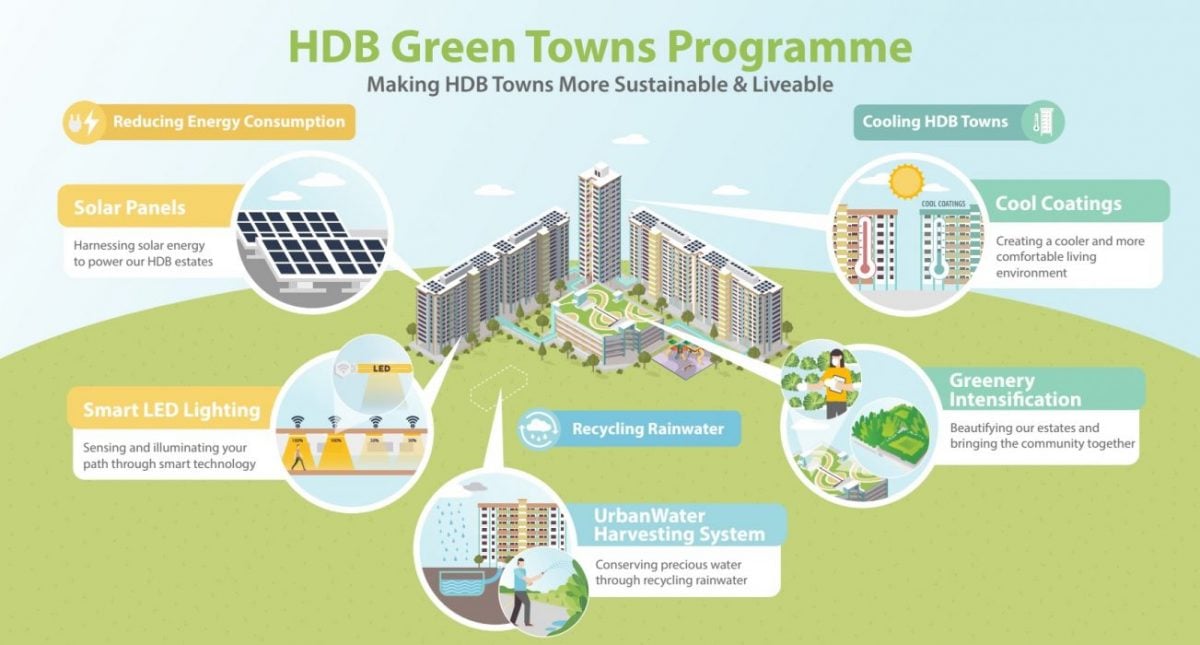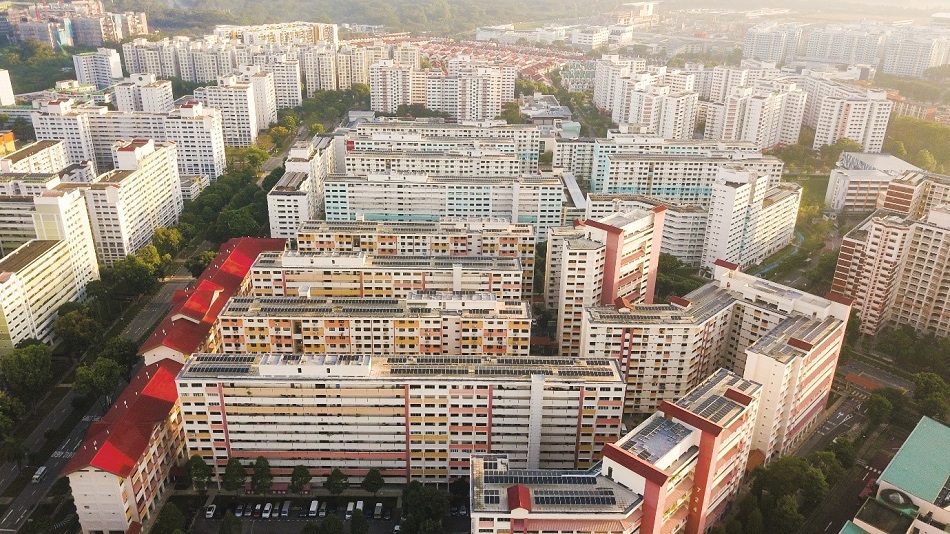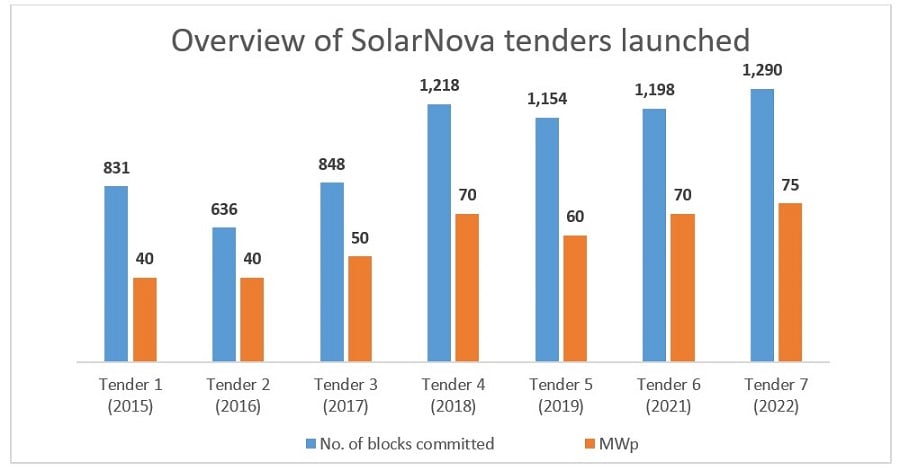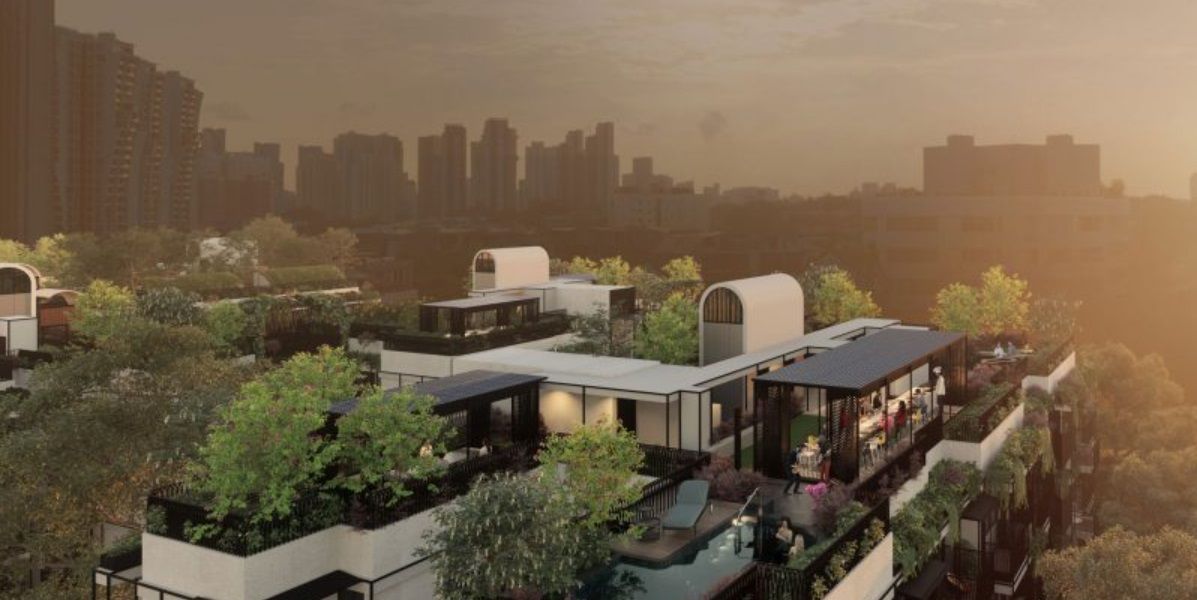Did you know about HDB’s SolarNova programme and how it powers common services (e.g. lifts, lights, water pumps) in HDB estates, with excess energy being channelled to the grid?
In this article, we look at how HDB’s SolarNova programme has fared since its inception, the benefits from it, and what other developments can do to avoid bill shocks from high gas and electricity costs.
What is the SolarNova programme?
As Singapore’s tropical landscape presents HDB with great potential to harness solar energy from rooftop spaces, HDBs are moving towards cleaner energy usage, including solar energy technology.
The SolarNova programme, led jointly by HDB and the Singapore Economic Development Board (EDB), has plans to accelerate the deployment of solar photovoltaic (PV) systems in Singapore. It is an integral part of the HDB Green Towns Programme (GTP) that aims to bring sustainable living to all existing HDB towns by 2030.

How has it fared?
Having already surpassed the previous solar target of 220 megawatt-peak (MWp), HDB has set another target to install a total capacity of 540 MWp by 2030.
This can potentially generate enough green energy to power the equivalent of 135,000 four-room HDB flats. HDB has just mentioned on Feb 25 that it is on track to meet the new target.
It has also called for the seventh solar leasing tender to install solar panels across 1,290 HDB blocks and 99 government sites.

What are the benefits of the SolarNova programme?
The main advantage of the SolarNova programme is that the residents’ block saves on electricity costs since the solar energy generated is used to power common areas, and excess solar energy is channelled to the grid.
This helps alleviate the costs of the block’s electricity bills, especially after an increase in electricity prices in Singapore due to soaring costs of gas and coal supply chain disruptions worldwide. Moreover, amid the Ukraine-Russia tensions, petrol and electricity prices are increasing.

Some residents living in private estates have felt the strain of the surging electricity bills as they expect to fork out more for the maintenance of common areas, for example, in some condos in Singapore.
Hence, setting up solar energy infrastructure might be beneficial for these residents, and there are already upcoming projects with energy-powered common areas in condominiums.
For example, the upcoming Jervois Mansion project will have roof pavilions powering 30% of its shared facilities. CDL’s D’Nest, a condominium located in Pasir Ris, is also a noteworthy project that has set a record for the ‘largest solar panels in a condominium’; its panels generate about 5% of the condominium’s annual energy usage.

Another benefit is that this aids Singapore in reducing its carbon footprint by transiting to clean energy. The new target could generate 648 GWh of solar power annually, facilitating the transition to cleaner energy and helping to mitigate climate change.
What can other developments do to shift to solar energy?
To avoid bill shocks from increasing gas and electricity costs and play a part in the global fight on climate change, more can be done to maximise solar energy adoption in Singapore.
Individuals living in private estates can choose to make their homes eco-friendlier. One method is to switch to green electricity plans by electricity providers. Another technique is installing solar panels at home using their roof space (Check out other eco-friendly renovation options here).
With past, current, and future property projects involving solar energy, it seems that cleaner forms of energy, especially solar power, will become more commonplace, especially in the current climate of price pressures.
Moving forward, the government will continue to work with all stakeholders to maximise solar energy adoption in Singapore, including private residential estates and condominiums.
–
–
How invested are you in living at a block with solar panel technology? Let us know in the comments section below or on our Facebook post.
If you found this article helpful, 99.co recommends Singapore Green Plan 2030: How will it impact property developments and sustainability in our country? and How 60,000 electric vehicle (EV) charging points in car parks may affect property demand (and Tesla sales).
Looking for a property? Find the home of your dreams today on Singapore’s fastest-growing property portal 99.co! If you would like to estimate the potential value of your property, check out 99.co’s Property Value Tool for free. Also, don’t forget to join our Facebook community page or Telegram chat group! Meanwhile, if you have an interesting property-related story to share with us, drop us a message here — and we’ll review it and get back to you.
The post How has HDB’s SolarNova programme fared, and why is this important? appeared first on 99.co.





















